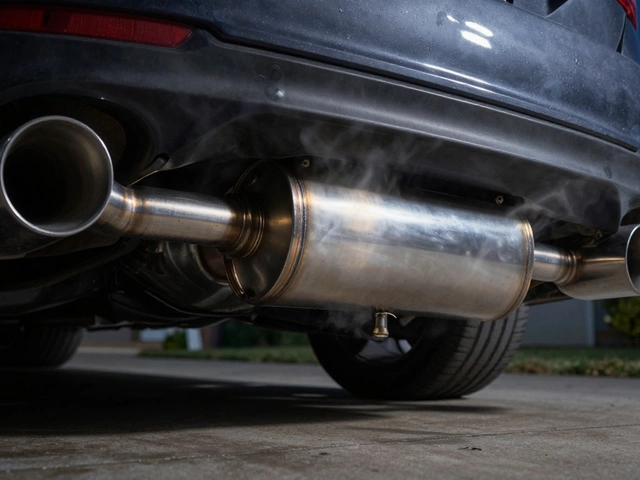Catback Exhaust: What It Is, How It Works, and What You Need to Know
When you hear the deep rumble of a tuned car rolling past, chances are it’s got a catback exhaust, the section of a vehicle’s exhaust system that runs from the catalytic converter back to the rear bumper, including the muffler and tailpipes. Also known as after-cat exhaust, it’s one of the most popular upgrades for drivers who want more sound, better flow, or just a meaner look. Unlike full exhaust systems that replace everything from the manifold, a catback system leaves the factory catalytic converter in place—making it legal in most places and easier to install.
What does a catback exhaust actually change? It’s not just about noise. A well-designed system reduces backpressure, letting your engine breathe easier. That can mean better throttle response, a slight boost in horsepower, and even a little more fuel efficiency—especially if you’re running a modified engine. The muffler, a component inside the catback system that controls sound levels is key here. A stock muffler is built to silence, but performance mufflers are tuned to let out a rich, controlled growl without being obnoxious. And the tailpipes, the final visible part of the exhaust that exits the car? They’re not just for show. Dual tips, polished finishes, and angled exits aren’t just style—they can help direct heat and reduce underbody noise.
Not all catback systems are made equal. Stainless steel lasts longer and resists rust better than aluminized steel, but costs more. Some systems are designed for daily driving—smooth, quiet at cruising speed, and loud only when you punch it. Others are built for track days or drag strips and can be too loud for the street. The catback exhaust you pick should match how you drive. If you commute in the city, go for something with a deep tone that doesn’t drone on the highway. If you hit the open road or track weekends, a more aggressive setup might be worth it.
And yes, there are legal limits. In the UK, exhaust noise is regulated. If your system is too loud or removes emissions controls (like the catalytic converter), you could fail an MOT or get fined. A good catback system keeps the cat intact and stays within decibel limits. Look for systems labeled as road-legal or check with the manufacturer. Some even come with removable resonators so you can tweak the sound later.
What you’ll find below are real-world guides from drivers who’ve swapped out their exhausts. You’ll see how to pick the right setup for your car, what to expect in sound and performance, and how to avoid common mistakes—like buying a system that’s too loud, too cheap, or just doesn’t fit. Whether you’re after a subtle upgrade or a full-on growl, these posts give you the facts without the fluff.





